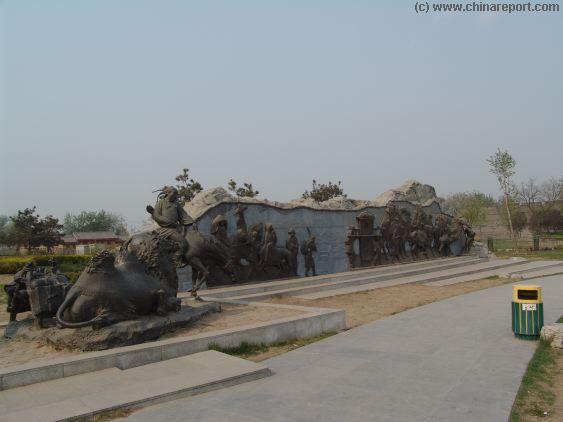

As many as 100,000 Chinese may have been slaughtered in the so-called Rape of Nanjing, including thousands of Chinese women raped before being murdered. The fighting was accompanied by vicious atrocities. (According to one theory the whole thing was stage-managed by the Chinese Communists to embroil the Kuomintang in a war with the Japanese.) Beijing and Shanghai fell in 1937, as did Nanjing, where Chiang Kai-Shek had established his Kuomintang capital. Hundreds of thousands of troops were sent in.

Both sides sent more troops to the area and early in the morning of July 8th Japanese infantry and armoured vehicles attacked the bridge and took it, but were driven off again.Īttempts were made to settle things, but the incident gave Japanese hawks the excuse to mount a full-scale invasion of China. Japanese infantry then tried to force their way into Wanping, but were driven back. The Chinese said they would do the searching themselves, with one Japanese officer accompanying them. The Japanese discovered that one of their soldiers was missing, thought the Chinese might have captured him and demanded to be allowed to search Wanping for him. What happened that July night is not entirely clear, but the Japanese were carrying out training exercises without giving the customary notice and a few shots were exchanged between them and the startled Chinese troops. Small numbers of both Japanese and Chinese soldiers were stationed near what in the West was called the Marco Polo Bridge, because the explorer had seen and described its predecessor, near the town of Wanping outside Beijing. Under agreements going back to the beginning of the century countries with legations in China had the right to keep troops there in modest numbers for protection. In 1931 they took over Manchuria altogether, before expanding south.Ī key moment came in 1937. They soon infiltrated Manchuria, which had rich reserves of coal and other minerals, and began to build up industry there. They defeated the Chinese in war in the 1890s and took away Korea. As a result, the conflict continued to grow.The Japanese drive to become a great power required the domination of China. The Japanese also maintained their position. The Chinese government, under strong anti-Japanese pressure, refused to make any concessions in the negotiation of the dispute. The Chinese garrison in the town refused the Japanese entry a shot was heard, and the two sides began firing.

On the night of July 7, 1937, a small Japanese force on maneuvers near the Marco Polo Bridge demanded entry to the tiny walled town of Wanping in order to search for one of their soldiers. By 1937 this movement had grown so strong that the Chinese communists and Nationalists agreed to end their civil war and form a United Front against further Japanese aggression.īefore the incident occurred, the Japanese army had occupied Fengtai, the railway junction close to the Marco Polo Bridge, southwest of Beiping. This violation of China’s territorial integrity produced a growing anti-Japanese movement in China. In 1931 Japan occupied Manchuria (now Northeast China) and established the puppet state of Manchukuo (Manzhouguo), spending large sums to develop the region’s industry and continuing to expand their occupation into northern China around Beiping and Tianjin. Marco Polo Bridge Incident, (July 7, 1937), conflict between Chinese and Japanese troops near the Marco Polo Bridge (Chinese: Lugouqiao) outside Beiping (now Beijing), which developed into the warfare between the two countries that was the prelude to the Pacific side of World War II. SpaceNext50 Britannica presents SpaceNext50, From the race to the Moon to space stewardship, we explore a wide range of subjects that feed our curiosity about space!.
/GettyImages-148753315-6cc86c9dc118418cb742468ece089905.jpg)
Learn about the major environmental problems facing our planet and what can be done about them!
#Marcopolo bridge how to
COVID-19 Portal While this global health crisis continues to evolve, it can be useful to look to past pandemics to better understand how to respond today.Student Portal Britannica is the ultimate student resource for key school subjects like history, government, literature, and more.This Time in History In these videos, find out what happened this month (or any month!) in history.#WTFact Videos In #WTFact Britannica shares some of the most bizarre facts we can find.Demystified Videos In Demystified, Britannica has all the answers to your burning questions.Britannica Classics Check out these retro videos from Encyclopedia Britannica’s archives.Britannica Explains In these videos, Britannica explains a variety of topics and answers frequently asked questions.


 0 kommentar(er)
0 kommentar(er)
